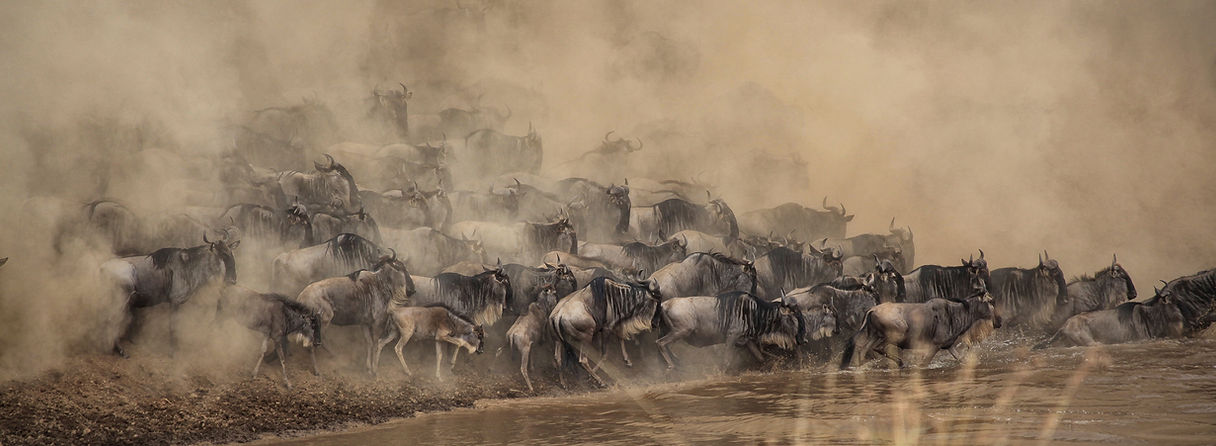Day 01: Arrival in Arusha
Upon your arrival at Kilimanjaro International Airport, you will be warmly welcomed by a senior safari guide who will accompany you to Kibo Palace Hotel in Arusha. Arusha, a city in northern Tanzania, serves as the gateway to many iconic national parks and natural wonders, offering a temperate climate and breathtaking landscapes. Enjoy dinner and settle in for an overnight stay.
Meal: Dinner
> Accommodation:
✓ Name: Kibo Palace Hotel
✓ Type: Hotel
Day 02: Arusha to Ngorongoro
After a delicious breakfast, embark on a journey to the spectacular Ngorongoro Conservation Area. Arriving at the lodge in time for lunch, you'll descend into the crater, marveling at the diverse wildlife it hosts, including wildebeests, zebras, elephants, and predators like lions and cheetahs. Don't miss the chance to visit Lake Magadi, home to flamingos and other aquatic birds.
Meal: Breakfast, Lunch, Dinner
> Accommodation:
✓ Name: Heart and Soul Lodge
✓ Type: Lodge
Day 03: Ngorongoro to Serengeti (Central Seronera)
Following breakfast, venture towards the heart of the Serengeti National Park, where endless plains stretch as far as the eye can see. Enjoy lunch upon arrival in the Lobo area, known for its annual wildebeest migration. Spend the afternoon on a thrilling game drive, soaking in the beauty of the Serengeti's landscapes and wildlife.
Meal: Breakfast, Lunch, Dinner
> Accommodation:
✓ Name: Serengeti Heritage tented Camp
✓ Type: Lodge
Day 04: Serengeti (Seronera Area)
After breakfast, embark on a full-day game drive in the Seronera area. Encounter a variety of wildlife, including elephants, buffaloes, gazelles, and big cats. Experience the tranquility of the Serengeti Plains and observe the rich birdlife along the Grumeti River.
Meal: Breakfast, Lunch, Dinner
> Accommodation:
✓ Name: Serengeti Heritage tented Camp
✓ Type: Lodge
:
Day 05: Serengeti (Central) to Northern Serengeti (Kogatende Area)
Enjoy breakfast before heading north to the remote Kogatende area, known for its high concentration of wildlife. Along the journey, keep an eye out for giraffes, buffaloes, and elephants. After lunch at the lodge, embark on an afternoon game drive, with the chance to witness the thrilling Mara River crossings during the wildebeest migration season.
Meal: Breakfast, Lunch, Dinner
> Accommodation:
✓ Name: Serengeti Mara Heritage Camp
✓ Type: Lodge
Day 06: Northern Serengeti (Kogatende)
Today, immerse yourself in the wildlife paradise of the Kogatende area. Encounter pride of lions and other resident wildlife, and if you're lucky, witness the dramatic Mara River crossings. Explore the diverse landscapes, from kopjes to woodlands, and savor the natural beauty reminiscent of Kenya's Masai Mara Game Reserve.
Meal: Breakfast, Lunch, Dinner
> Accommodation:
✓ Name: Serengeti Mara Heritage Camp
✓ Type: Lodge
Day 07: Northern Serengeti (Kogatende) to Arusha
After breakfast at the camp, embark on a final game drive en route to Kogatende Airstrip. Bid farewell to the wilderness as you board a scheduled flight back to Arusha. Upon arrival, enjoy lunch before concluding your African safari adventure. You will be transferred to your hotel, marking the end of our safari services.
Meal: Breakfast, Lunch
Accommodation: Not Applicable




